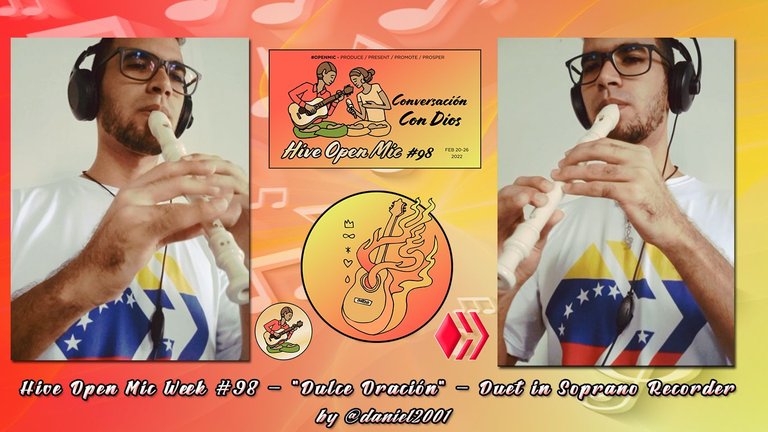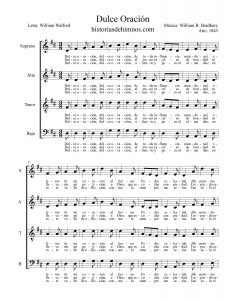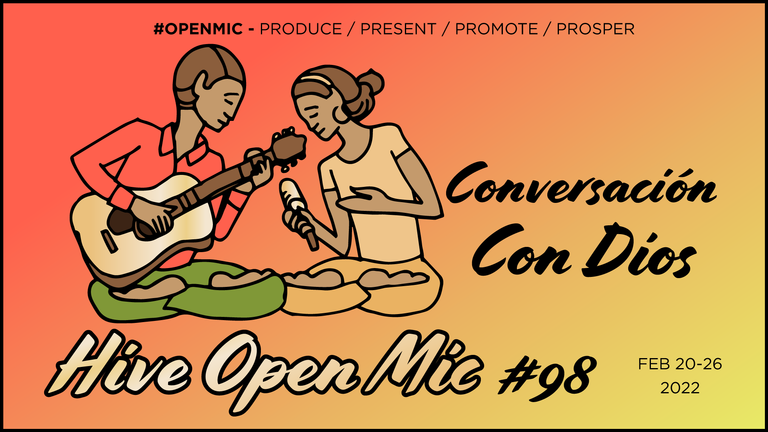
¡Saludos queridos amigos de Hive! ésta semana les traigo mi participación al #Openmic con una canción muy hermosa, se trata de un himno cristiano algo antiguo pero que hoy en día se sigue cantando en las iglesias, se titula "Dulce oración" y creo que va de acuerdo a la temática de ésta semana ya que a través de la oración podemos hablar con Dios, mientras buscaba que traerles conseguí las partituras en un sitio web que yo frecuenté anteriormente y logré ensamblar las dos primeras voces en la flauta dulce contralto y así hacer éste pequeño dueto, espero les guste...
Greetings dear friends of Hive! this week I bring you my participation in the #Openmic with a very beautiful song, it is a somewhat old Christian hymn but that is still sung in churches today, it is called "Sweet prayer" and I think it goes according to the theme of this week because through prayer we can talk to God, while I was looking for something to bring you, I got the sheet music on a website that I used before and I managed to assemble the first two voices on the contralto recorder and thus make this little duet, I hope you like...

Partitura | Sheet Music

Dulce oración tiene una historia muy humilde e inspiradora para todo el que considera que sus limitaciones no le permitirán realizar un mayor servicio. Fue escrito en 1842 por el Reverendo William W. Walford. Su nombre sobrevivió al tiempo únicamente por ser el hombre inspirado a dar vida a uno de los himnos más bellos y sencillos que tratan el tema de la oración. Walford era un predicador ciego, sin educación formal ni ascendencia de renombre. Su falta de vista había sido compensada por una increíble memoria y según el testimonio de Henry Kirke White (en otros libros se menciona al Reverendo Thomas Salmon), Walford decía el capítulo y versículo exacto de la Biblia mientras predicaba, y podía repetir los salmos, el nuevo testamento y las profecías, de forma casi exacta a como estaban escritos en la Biblia. Fue así como se ganó la fama de saberse toda la Biblia de memoria. Pasaba el tiempo pensando en sermones, con sus manos hacía calzadores de zapatos y otros implementos. De vez en cuando hacía poesía. “en una ocasión, mientras lo visitaba, me repitió dos o tres poemas que había escrito. ‘¿qué tal este?’ me dijo, mientras repetía las líneas, con una sonrisa complaciente, tocada con un ligero miedo a la crítica. Rápidamente copié las líneas con mi lápiz mientras el las decía”. No imaginaba Walford que su poema se convertiría en el himno de la oración por excelencia en la comunidad cristiana.
Thomas Salmon lo publicó en el New York Observer en la edición del 13 de Septiembre de 1845. En 1859 William B. Bradbury vio el poema y compuso una melodía a la que tituló Sweet Hour (dulce hora). El poema y la melodía fueron publicados juntos por primera vez en 1859 en el himnario titulado Cottage Melodies con el número 568 publicado por el mismo William Bradbury. Fue llevado al español por el conocido traductor de himnos Juan Bautista Cabrera.
Sweet Prayer has a very humbling and inspiring story for anyone who feels that their limitations will not allow them to do greater service. It was written in 1842 by the Reverend William W. Walford. His name survived time only because he was the man inspired to give life to one of the most beautiful and simple hymns on the subject of prayer. Walford was a blind preacher, with no formal education or renowned ancestry. His lack of sight had been compensated for by an incredible memory and according to the testimony of Henry Kirke White (Reverend Thomas Salmon is mentioned in other books), Walford spoke the exact chapter and verse of the Bible while preaching, and could repeat the psalms, the new testament and the prophecies, almost exactly as they were written in the Bible. This is how he gained the fame of knowing the entire Bible by heart. He spent his time thinking about sermons, with his hands he made shoe horns and other implements. From time to time he wrote poetry. “On one occasion, while I was visiting him, he repeated to me two or three poems he had written. ‘how about this one?’ he said to me, as he repeated the lines, with a complacent smile, touched with a slight fear of criticism. I quickly copied the lines with my pencil as he said them." Walford did not imagine that his poem would become the hymn of prayer par excellence in the Christian community.
Thomas Salmon published it in the New York Observer in the edition of September 13, 1845. In 1859 William B. Bradbury saw the poem and composed a melody which he titled Sweet Hour (sweet hour). The poem and melody were first published together in 1859 in the Cottage Melodies hymnal number 568 published by William Bradbury himself. It was translated into Spanish by the well-known hymn translator Juan Bautista Cabrera.
Fuente/Source

Canción Original | Original Song




▶️ 3Speak
@tipu curate 5
Upvoted 👌 (Mana: 0/100) Liquid rewards.